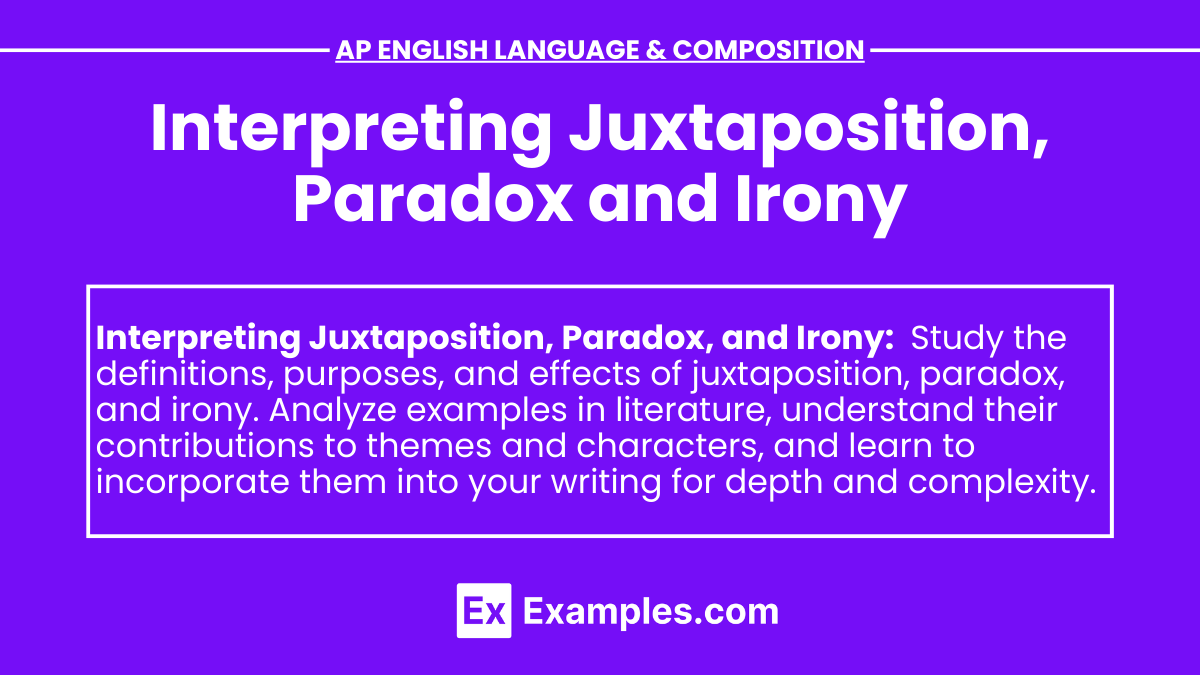In AP English Language and Composition, mastering literary devices like juxtaposition, paradox, and irony is essential for crafting effective rhetorical sentences and cumulative sentences that enhance both argumentative speech and argumentative writing. These devices enrich texts by adding layers of meaning and creating contrasts, enabling students to develop nuanced analyses and compelling arguments. Understanding and analyzing these elements can significantly improve the clarity, persuasiveness, and depth of students’ writing, crucial for success in the exam.
Learning Objectives
The learning objectives for understanding juxtaposition, paradox, and irony in AP English Language and Composition include mastering the use of cumulative sentences to build complex analyses, crafting clear explanatory essays and expository essays to convey intricate ideas, employing rhetorical sentences to enhance persuasive writing, developing a strong final thesis statement that guides essays, and applying critical thinking to interpret and evaluate the use of these literary devices in texts.
Juxtaposition
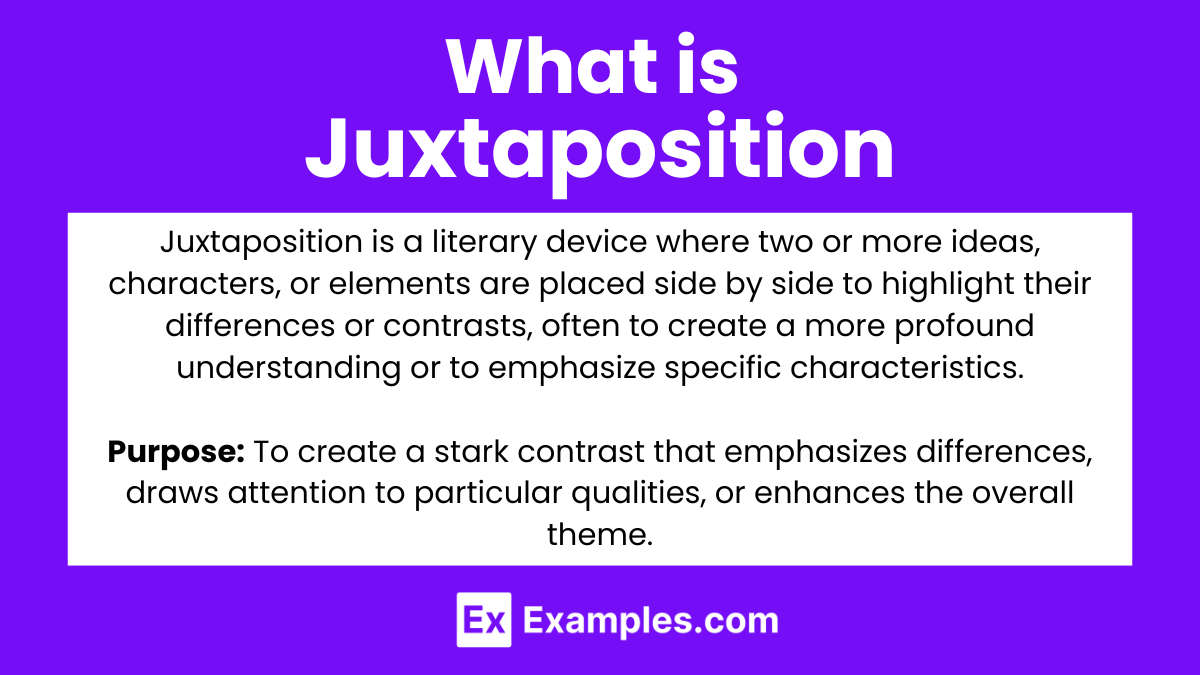
- Definition: Juxtaposition involves placing two or more ideas, characters, actions, or settings side by side to highlight their contrasts and differences.
- Purpose: To create a stark contrast that emphasizes differences, draws attention to particular qualities, or enhances the overall theme.
- Examples:
- Characters: In Charles Dickens’ “A Tale of Two Cities,” the characters of Charles Darnay and Sydney Carton are juxtaposed to highlight themes of sacrifice and redemption.
- Settings: In F. Scott Fitzgerald’s “The Great Gatsby,” the opulence of Gatsby’s parties is juxtaposed with the desolation of the Valley of Ashes to critique the American Dream.
- Ideas: In Shakespeare’s “Macbeth,” the juxtaposition of light and dark imagery underscores themes of good versus evil.
- Analysis:
- Identify the elements being juxtaposed.
- Analyze the impact of the contrast on the overall narrative or theme.
- Consider how the juxtaposition influences readers’ perceptions and understanding.
Paradox
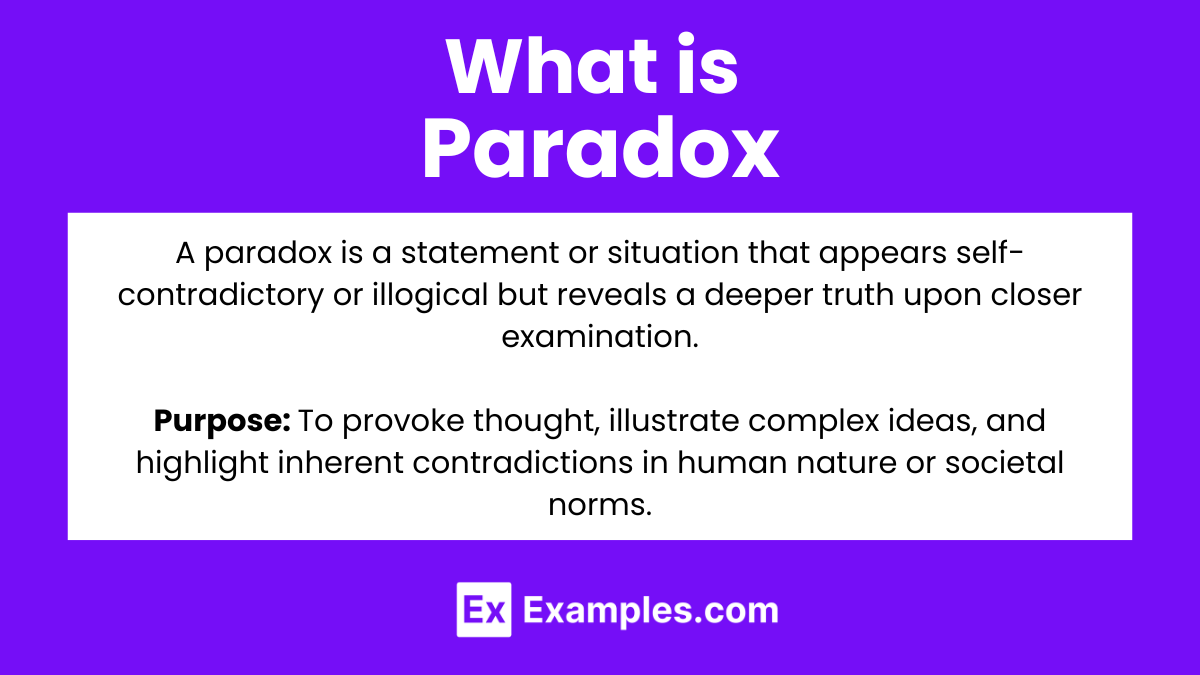
- Definition: A paradox is a statement or situation that appears self-contradictory or illogical but reveals a deeper truth upon closer examination.
- Purpose: To provoke thought, illustrate complex ideas, and highlight inherent contradictions in human nature or societal norms.
- Examples:
- Literature: In George Orwell’s “1984,” the Party’s slogans “War is peace,” “Freedom is slavery,” and “Ignorance is strength” are paradoxical statements that reveal the manipulative nature of totalitarian regimes.
- Philosophy: The paradox “I can resist anything except temptation” (Oscar Wilde) explores the complexity of human desires and self-control.
- Analysis:
- Identify the paradox and explain why it seems contradictory.
- Explore the deeper meaning or truth that the paradox reveals.
- Consider the paradox’s role in developing themes or characters.
Irony
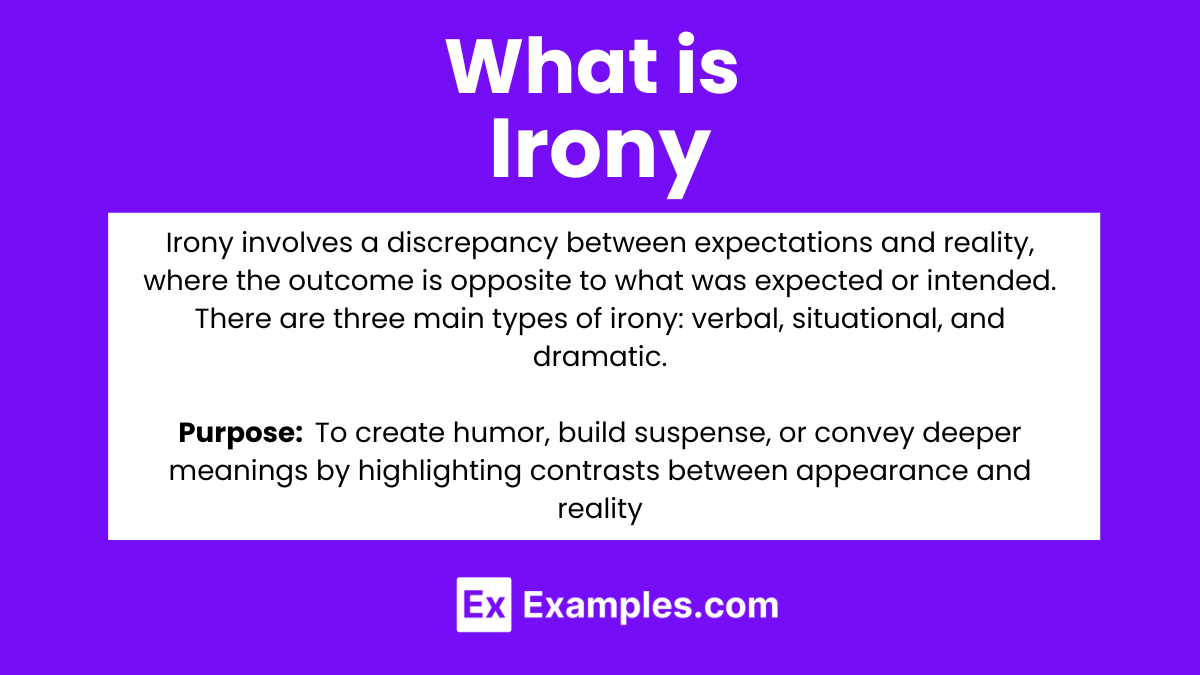
- Definition: Irony involves a discrepancy between expectations and reality, where the outcome is opposite to what was expected or intended. There are three main types of irony: verbal, situational, and dramatic.
- Verbal Irony: When a speaker says one thing but means another, often in a sarcastic manner.
- Situational Irony: When there is a contrast between what is expected to happen and what actually occurs.
- Dramatic Irony: When the audience knows something that the characters do not.
- Purpose: To create humor, build suspense, or convey deeper meanings by highlighting contrasts between appearance and reality.
- Examples:
- Verbal Irony: In Jane Austen’s “Pride and Prejudice,” Mr. Bennet ironically remarks, “I have high respect for your nerves. They are my old friends. I have heard you mention them with consideration these last twenty years at least.”
- Situational Irony: In O. Henry’s “The Gift of the Magi,” a couple sells their most prized possessions to buy gifts for each other, only to find that their gifts are now useless.
- Dramatic Irony: In Shakespeare’s “Romeo and Juliet,” the audience knows Juliet is alive when Romeo believes she is dead, leading to tragic consequences.
- Analysis:
- Identify the type of irony and the discrepancy between expectations and reality.
- Analyze how irony contributes to the plot, character development, or themes.
- Consider the emotional or intellectual impact of irony on the audience.
Using Juxtaposition, Paradox, and Irony in Analysis and Writing
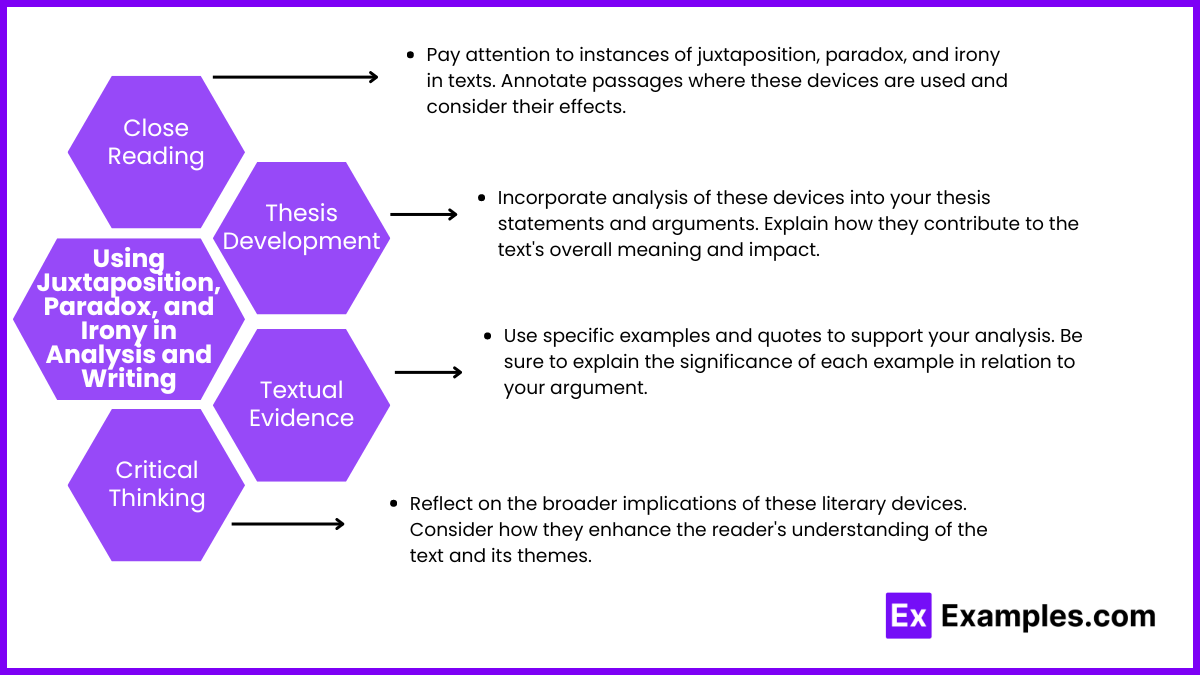
- Close Reading: Pay attention to instances of juxtaposition, paradox, and irony in texts. Annotate passages where these devices are used and consider their effects.
- Thesis Development: Incorporate analysis of these devices into your thesis statements and arguments. Explain how they contribute to the text’s overall meaning and impact.
- Textual Evidence: Use specific examples and quotes to support your analysis. Be sure to explain the significance of each example in relation to your argument.
- Critical Thinking: Reflect on the broader implications of these literary devices. Consider how they enhance the reader’s understanding of the text and its themes.

